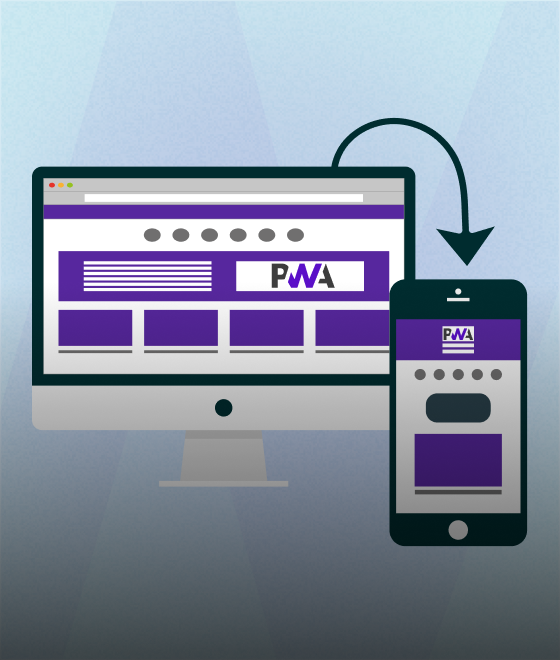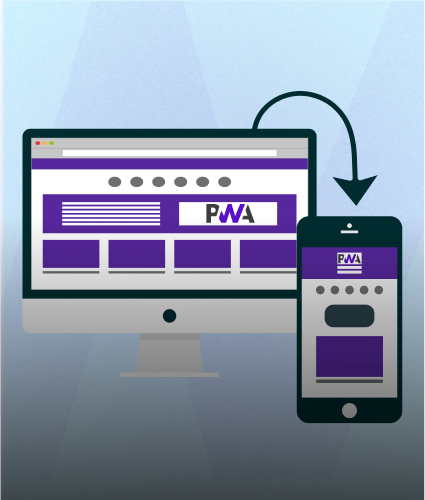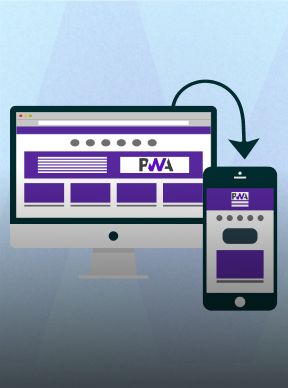A content management system, also called CMS, is a website application platform that allows non-technical users to easily build and post content. Depending on the CMS, the content can be published on a website, mobile app, or other digital platforms.
Why Prefer CMS?
A CMS is important for current industries as it assists in building and organizing digital content. The technology behind a CMS has also experienced its digital modification.
A CMS is a software application for creating, organizing, and modifying digital content on websites without advanced technical knowledge. It gives content makers, editors, and administrators a way to manage everything from text to multimedia, structuring pages, and more.
Presently, there exist three categories of content management systems (CMS). However, our blog focus will be an in-depth examination of the two primary types.
- Headless CMS
- Traditional CMS
What Exactly is a Headless CMS?
A Headless CMS holds content creation and storage individually from how the content is shown. It handles the content and delivers it to any frontend system using APIs like REST or GraphQL. This technique delivers flexibility in how content is delivered. Allowing it to be shown across different platforms without being specified to a specific design. Examples of Headless CMS platforms include Contentful, Strapi, and Sanity.
Exploring the Mechanism of Headless CMS
Content Innovation: Content creators can smoothly make, modify, and share content within a CMS using easy tools. The system allows for easy organization, tagging, content scheduling, version management, and media libraries, creating workflow more efficiently and increasing productivity.
API-Driven Delivery: The details are provided through APIs, allowing it to be accessed by any front end, such as a website, mobile app or another digital platform. This API-driven technique divides content from presentation.
Independent Frontend and Backend: Remember this: Developers have full authority over the front end. They can use technologies like React, Vue, or Angular to present content most suitably.
Headless CMS Advantages
Cross-Platform Versatility
You can share content on different platforms (such as websites, and mobile apps) without including to recreate it for each.
The capacity to share content on multiple platforms without recreating it for each channel is not only a convenience; it is a strategic benefit in today's fast-paced digital environment. By simplifying content distribution and maintaining a consistent brand voice, organizations can improve their communication efforts, ultimately leading to increased engagement and better audience retention.
Safety
Headless websites are normally more secure than those built on traditional CMS platforms. This is because the content and backend systems are separate from the actual website that users interact with, making it harder for hackers to target the system. Also, headless sites are more resistant to DDoS attacks, as large volumes of requests are handled more efficiently, usually being processed as a single request.
Another benefit is that headless sites are less vulnerable to security issues related to updates. For example, with platforms like Drupal, whenever a new security update is released, creators continually rush to apply patches because the system is open source and exposed. In contrast, the backend of a headless site is more secure and isolated, making it less attainable to potential attackers.
Speed
Headless websites load quicker than regular sites. This speed leads to more useful for SEO performance and search engine rankings. It also means fewer visitors exiting the site immediately and more visitors making a purchase. Traditional CMSs can be slow because they generate pages on the server, but headless CMSs don't have this issue because they generate pages on the user's device.
Headless CMS platforms generally deliver API communication protocols that allow user-side applications to fetch only the required data. This ability minimizes unnecessary data transfer and improves overall performance. When creating a web page linked to a headless CMS, a single request can load in under a second. In contrast, traditional CMS platforms may require multiple server requests, leading to long loading times.
Developer Freedom
Frontend technologies can be preferred to fit specific needs. For instance, if a project demands high-performance rendering for complicated data visualizations or interactive features, frameworks like React or Vue.js can speed up page rendering and reduce the time to interactivity. On the other hand, if the focus is on rapid growth and prototyping, simpler frameworks or libraries might be more suitable. This flexibility allows developers can create modern user experiences tailored to the application's goals.
In addition, by seamlessly integrating third-party APIs and services into frontend architectures, industries can customize their tools more smoothly. This means creators can connect different tools for analytics, social media, payments, and more without being tied to a specific technology stack. This allows industries to offer advanced user experiences with minimal backend changes. Moreover, dividing frontend and backend systems, often done through headless architectures, allows for quicker iterations and more creative freedom in UI/UX, as changes can be made independently of backend logic.
Headless CMS Disadvantages
Complex Setup
When you set up a Headless CMS, you must have a good knowledge of both backend and frontend development. This is because it introduces a level of complexity above traditional CMS platforms. In a typical CMS, the backend and front end are tightly integrated, meaning content creation, management, and presentation are all handled within a single system. However, with a Headless CMS, the backend is decoupled from the front end. This allows developers to use any technology to create the user interface. This flexibility is powerful, but it requires developers to be skilled in managing APIs because the front end must communicate with the backend via RESTful or GraphQL APIs to retrieve content and data.
Higher Project Development Expenses
When you use a Headless CMS, the frontend and backend are not connected. This indicates the front end has to be developed individually from the content management system. This gives you more flexibility and customization, but it can also increase costs and timelines, mainly for smaller projects with restricted budgets. In a traditional CMS, predefined themes and templates make development easier and allow for quicker deployment of the user interface with minimal coding. However, with a headless approach, developers must create the front end from the beginning, designing and coding each user-facing part carefully.
Editorial Learning Challenges
Moving from a traditional CMS to a Headless CMS can be challenging for editors. In a traditional system, editors can see how their content will look to end users as they create and edit it. This "What You See Is What You Get" functionality allows editors to make real-time adjustments and ensure that the content structure, formatting, and design align with their expectations before publishing.
How to Develop a Headless CMS: A Complete Guide for Modern Web Development
While I generally propose the backend and front end to fit specific project requirements, I've shared some great examples here to help guide your development process.

Step 1: Understand the Architecture of a Headless CMS
- Backend (Laravel or Node.js): Organizes content and exposes APIs.
- Frontend (Vue.js or React.js): Consumes content from APIs and generates the UI.
Step 2: Arrange Up the Backend (Content API)
Option 1: Laravel Backend
- Install Laravel: Use Composer to install Laravel.
Option 2: Node.js Backend (with Express)
- Set Up Node.js Project:
Once the backend is set up, we can create custom APIs to seamlessly handle dynamic data on the front end side, providing a smooth and efficient user experience.
Step 3: Set Up the Frontend (Vue.js or React.js)
Option 1: Vue.js Frontend
- Install Vue.js:
- Install Axios for API Requests:
- Fetch Data from the Backend:
Option 2: React.js Frontend
- Set Up a React Project:
- Install Axios:
- Fetch Data from the Backend:
What Exactly is a Traditional CMS?
Platforms like WordPress, Drupal, and Joomla are classic examples of traditional CMS systems. These platforms offer many add-ons and themes that let users modify how their websites look and work without changing the main CMS structure. Many people like these platforms because they are comfortable to use. This is mainly true for small businesses, bloggers, and groups with limited tech skills. If you want something that's easy to set up and take care of, traditional CMS platforms give you everything you need in one place. You can manage everything from where your content is stored to how it looks to visitors, all from one dashboard.
Exploring the Mechanism of Traditional CMS
Content Handling: Editors and content creators use a graphic user interface (GUI) to easily manage digital content like pages, blog posts, images, and videos. This user-friendly interface destroys the need for specialized expertise, allowing non-technical users to create, edit, and organize content without writing code.
Templating System: Traditional CMS platforms offer a variety of built-in templates and themes to help creators smoothly define the build and design of website content. These pre-designed techniques include headers, footers, navigation menus, and content sections, saving time and action in website creation.
Coupled Frontend & Backend: The tight connection between the backend and frontend allows for built-in features that enhance user experience. Many traditional CMS platforms have pre-designed templates that automatically format content based on the selected theme, providing a compatible look and feel across the full site. This makes the publishing method more efficient, as creators can preview their content in real-time before it runs live.
Traditional CMS Advantages
Simplicity of Operation
Creators can smoothly use easy tools to create and organize content. They can focus on writing interesting articles, blogs, or updates without needing to know how to code. Tools like drag-and-drop and customizable themes make their job faster and more efficient. This allows creators to be more effective and innovative with fewer barriers.
Ready-made Themes and Templates
Traditional CMS platforms come with ready-made templates that can help save time during development and make it more comfortable to customize websites quickly. This comfort speeds up website launches and increases productivity.
Comprehensive Solution
This platform has a collection of tools to help manage your online company. It contains features for editing content and managing media, making it more effortless to create, manage, and encourage online content. It also has tools for enhancing visibility in search engine results.
Decreased Initial Setup Costs
For simple websites, traditional CMS solutions are affordable and comfortable to use. They come with ready-made templates for easy customization. They are fit for small enterprises and people, making them a good option for building a primary online presence.
Traditional CMS Disadvantages
Limited Growth Opportunities
Traditional CMS platforms struggle to work well on additional channels like mobile apps and IoT devices. They are mainly made for websites, so it's hard to use the content on other platforms. Adjusting website content for mobile apps accepts additional work, and IoT devices need real-time content and dynamic relations that traditional CMS platforms may not be able to take.
Frontend Boundaries
When the frontend is tightly associated with the backend, creators face restrictions in managing how content is delivered. This results in a fixed structure, making it difficult to execute modern innovation methods and user experiences. This absence of flexibility can hide creation and restrict the use of advanced front-end technologies. To meet the demands of current web applications.
Performance Challenges
When a website grows, the way the front end and back end are closely related can cause slow performance. Modifications in one part of the system can cause the other part slower, leading to uncertainties in delivering details to users. To fix this, think about a better flexible technique that allows the frontend and backend parts to grow independently. This can make the website quicker and provide users with a more satisfactory experience.
How to Develop a Traditional CMS: A Complete Guide for Modern Web Development

Step 1: Set Up the Development Environment
Option 1: WordPress Setup
- Select Hosting:
- Select a hosting provider like Bluehost, Hostinger, or DigitalOcean. Many hosts offer one-click WordPress installation.
- Install WordPress:
- If using a hosting provider with cPanel, you can easily install WordPress using the one-click installer.
- Alternatively, download WordPress from wordpress.org, and manually upload it to your server using FTP.
- Configure the Database:
- WordPress requires a MySQL database. Use phpMyAdmin (provided by most hosts) to create a new database.
- During installation, WordPress will ask for database details, including: some text
- Database Name
- Database Username
- Password
- Host (usually localhost)
- Set Up WordPress:
- Access your site by visiting http://yourdomain.com/wp-admin/install.php and complete the setup by providing site details like site name, admin username, password, and email address.
Option 2: Drupal Setup
- Choose Hosting:
- Select a hosting provider with Drupal support like A2 Hosting, Pantheon, or Cloudways.
- Install Drupal:
- Download the latest version of Drupal from drupal.org or use the one-click installer from your hosting provider.
- Configure the Database:
- Drupal also uses MySQL (or PostgreSQL). You will need to set up a database for your Drupal site.
- Set Up Drupal:
- Access your site by visiting http://yourdomain.com/core/install.php and follow the steps to set up your Drupal site (language, database configuration, admin username, and password).
Now, you can select a theme and fully customize it to match your needs. With extra features tailored to your preferences, your Traditional CMS is ready to be published and launched live.
What’s the Best Choice for Modern Web Development?
Selecting whether to use a headless CMS or a traditional CMS relies heavily on your needs and your objectives.
Go with a Headless CMS if: A Headless CMS is an excellent choice for those who need a flexible and scalable answer to share content on different platforms such as websites, and mobile apps. It can manage custom frontends and complicated content delivery requirements, providing your project with the skillfulness and future-proofing it needs.
Go with a Traditional CMS if: If you're building a website, blog, or small business site focused on making it easy for content editors to handle content and you don't plan to share content across multiple platforms, a Traditional CMS is the right choice.
As you weigh the options between Headless and Traditional CMS, having a reliable development partner is crucial. At Zignuts, we offer top-notch web application development services tailored to your specific needs. Our expert team can help you implement the ideal CMS solution for your project, ensuring seamless integration and optimal performance. Let us elevate your digital strategy today!
Conclusion
When creating websites, you have two main options for organizing content: Headless CMS and Traditional CMS.
Headless CMS is believed to be a future-proof option for current web development because it is adaptable and can provide content across various channels. On the other hand, Traditional CMS is better suited for more straightforward projects focused on websites, where ease of use is most important.
To make the right option, consider your project's dimensions, audience, and long-term objectives. This will ensure that your CMS can adapt as your content plan becomes.




.svg)

.svg)



.svg)

.svg)

.webp)
.webp)




.png)
.png)
.png)
.png)
.png)
.png)






